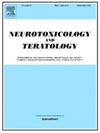TREM2通过SYK促进BV2细胞的有丝分裂,从而抑制lps诱导的焦亡和炎症。
IF 2.8
3区 医学
Q3 NEUROSCIENCES
引用次数: 0
摘要
神经炎症是术后认知功能障碍(POCD)发病的关键因素。维持小胶质细胞的稳态对于调节神经炎症至关重要,因为小胶质细胞的死亡可以引发中枢神经系统的炎症反应。髓样细胞2上表达的触发受体(TREM2)在支持细胞存活和调节小胶质细胞驱动的神经炎症中起重要作用。我们之前的研究表明,TREM2过表达对老年小鼠的神经炎症和认知缺陷具有保护作用。然而,TREM2在小胶质细胞中起作用的确切机制尚不清楚。因此,本研究旨在研究TREM2在脂多糖(LPS)诱导的BV2细胞死亡和神经炎症中的作用。本研究通过western blot分析、流式细胞术和酶联免疫吸附实验表明,TREM2可以减少lps诱导的核苷酸结合寡聚结构域样受体蛋白3 (NLRP3)介导的焦亡和随后的炎症因子释放。最近的研究表明,脾酪氨酸激酶(SYK)是小胶质细胞中TREM2的下游受体激酶,其缺失可导致神经炎症性疾病加重。本研究进一步证明,通过TREM2处理激活SYK可减轻lps诱导的线粒体膜潜在损伤,促进线粒体自噬,抑制nlrp3介导的BV2细胞焦亡,从而发挥神经保护作用。相反,R406抑制SYK导致小胶质细胞死亡和神经炎症加重,从而降低TREM2的神经保护作用。我们的研究结果表明,TREM2和SYK可以减轻lps诱导的BV2小胶质细胞的炎症反应,并通过增强线粒体自噬来干扰焦亡。这些发现表明TREM2和SYK可能是神经炎症的有价值的治疗靶点。本文章由计算机程序翻译,如有差异,请以英文原文为准。

TREM2 inhibits LPS-induced pyroptosis and inflammation by promoting mitophagy via SYK in BV2 cells
Neuroinflammation is a critical factor in the pathogenesis of postoperative cognitive dysfunction (POCD). Maintaining microglial homeostasis is vital for regulating neuroinflammation, as microglial cell death can trigger an inflammatory response within the central nervous system. The triggering receptor expressed on myeloid cells 2 (TREM2) plays an essential role in supporting cell survival and modulating microglial-driven neuroinflammation. Our previous study indicated that TREM2 overexpression exerts protective effects against neuroinflammation and cognitive deficits in aged mice. However, the precise mechanisms by which TREM2 functions in microglia remain unclear. Consequently, this study aimed to examine the role of TREM2 in lipopolysaccharide (LPS)-induced cell death and neuroinflammation in BV2 cells. This research showed that TREM2 reduces LPS-induced nucleotide-binding oligomerization domain-like receptor protein 3 (NLRP3)-mediated pyroptosis and the subsequent release of inflammatory factors through western blot analysis, flow cytometry, and enzyme-linked immunosorbent assay. Recent research has suggested that the loss of spleen tyrosine kinase (SYK), a downstream receptor kinase of TREM2 in microglia, results in exacerbated neuroinflammatory disease. This study further demonstrated that SYK activation via TREM2 treatment exerts neuroprotective effects by mitigating LPS-induced mitochondrial membrane potential damage, facilitating mitophagy, and inhibiting NLRP3-mediated pyroptosis in BV2 cells. Conversely, SYK inhibition by R406 led to microglial cell death and aggravated neuroinflammation, thereby reducing the neuroprotective effects of TREM2. Our findings indicate that TREM2 and SYK mitigate the inflammatory response in LPS-induced BV2 microglia and interfere with pyroptosis by enhancing mitophagy. These findings suggest that TREM2 and SYK may be valuable therapeutic targets for neuroinflammation.
求助全文
通过发布文献求助,成功后即可免费获取论文全文。
去求助
来源期刊
CiteScore
5.60
自引率
10.30%
发文量
48
审稿时长
58 days
期刊介绍:
Neurotoxicology and Teratology provides a forum for publishing new information regarding the effects of chemical and physical agents on the developing, adult or aging nervous system. In this context, the fields of neurotoxicology and teratology include studies of agent-induced alterations of nervous system function, with a focus on behavioral outcomes and their underlying physiological and neurochemical mechanisms. The Journal publishes original, peer-reviewed Research Reports of experimental, clinical, and epidemiological studies that address the neurotoxicity and/or functional teratology of pesticides, solvents, heavy metals, nanomaterials, organometals, industrial compounds, mixtures, drugs of abuse, pharmaceuticals, animal and plant toxins, atmospheric reaction products, and physical agents such as radiation and noise. These reports include traditional mammalian neurotoxicology experiments, human studies, studies using non-mammalian animal models, and mechanistic studies in vivo or in vitro. Special Issues, Reviews, Commentaries, Meeting Reports, and Symposium Papers provide timely updates on areas that have reached a critical point of synthesis, on aspects of a scientific field undergoing rapid change, or on areas that present special methodological or interpretive problems. Theoretical Articles address concepts and potential mechanisms underlying actions of agents of interest in the nervous system. The Journal also publishes Brief Communications that concisely describe a new method, technique, apparatus, or experimental result.

 求助内容:
求助内容: 应助结果提醒方式:
应助结果提醒方式:


